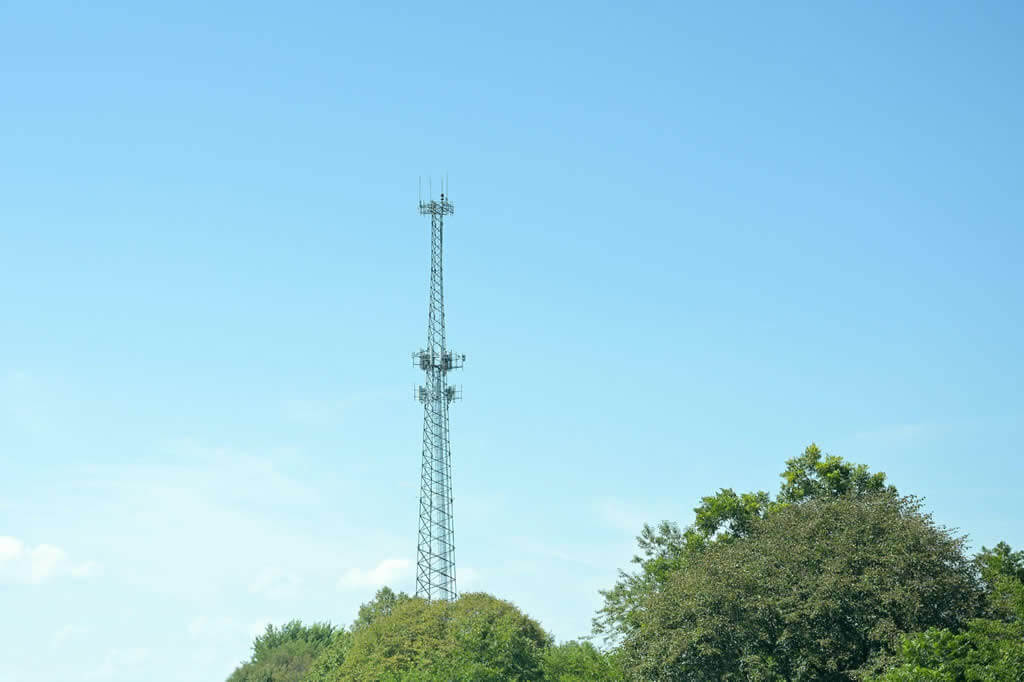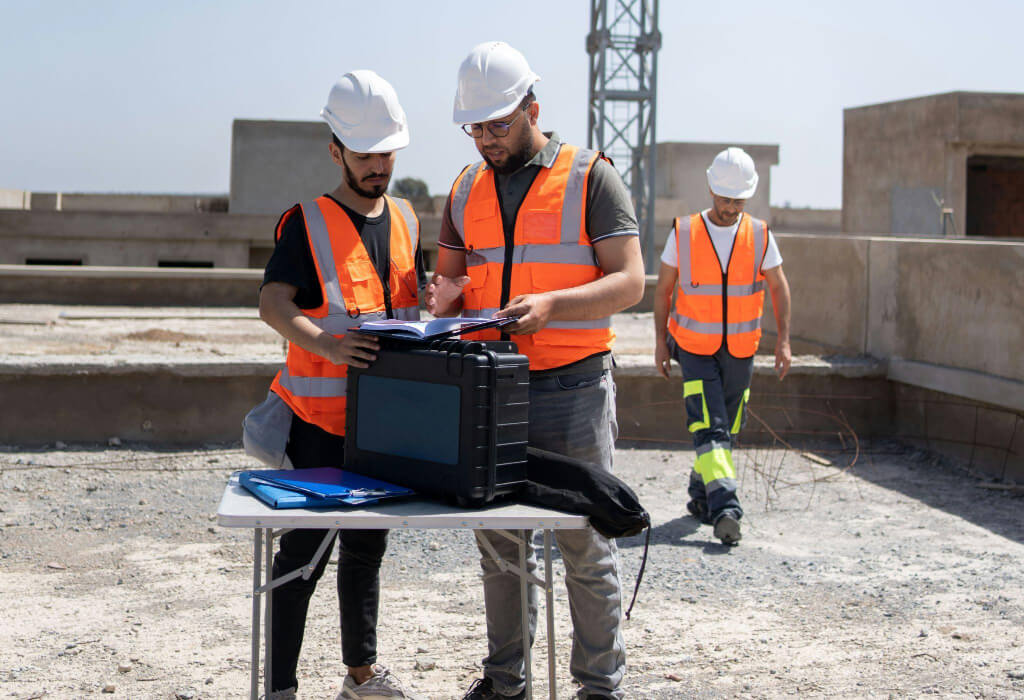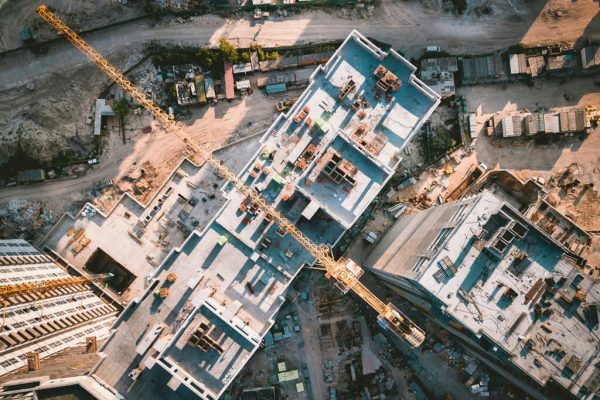Drones are the future of cell tower inspections! In this blog post, we’ll explore the numerous advantages of drone cell tower inspections, the steps to prepare for a successful inspection, and how drone data can be implemented in tower management.
Key Takeaways
- Drones provide enhanced safety measures, cost-efficiency and time-saving capabilities for Cell Tower inspections.
- Preparation is key to ensure a successful drone inspection! Steps such as equipment selection, airspace authorization and flight planning must be taken.
- Drone data can optimize sales & lease planning while specialized training programs enable pilots to gain the necessary expertise for safe tower inspections.
The Advantages of Drone Cell Tower Inspections

Gone are the days of manual cell tower inspections, filled with safety risks and potential climbing hazards. Utilizing drones for cell tower inspections offers several benefits:
- Reduces the possibility of accidents and injuries
- Eliminates the need for workers to be exposed to hazardous radiofrequency (RF) radiation
- Allows the inspection team to operate at a safe distance from the tower
- Provides comprehensive data, making the inspection process more efficient
- Saves time
- Increase cost efficiency
Enhanced Safety Measures
Drones significantly minimize the risk of fatal falls and greatly reduce the danger of dropped tools causing injury during cell tower inspections. This method has is changing the way tower inspections are conducted, prioritizing safety while still delivering accurate data. In addition to reducing safety risks for workers, drones also decrease their exposure to hazardous radiofrequency (RF) radiation commonly found near cell towers. .
Cost Efficiency
Drone inspections offer a more cost-efficient alternative to traditional manual inspections, enabling early identification of maintenance requirements and averting costly repairs. More frequent inspections facilitated by drones allow for early detection of maintenance issues, thus preventing cost escalation.
Moreover, drone inspections offer several benefits:
- Enable cell towers to remain operational, avoiding any loss of revenue due to downtime
- Provide accurate data for better decision-making
- Facilitate asset owners to submit insurance and warranty claims, potentially resulting in substantial cost savings
Time-Saving Capabilities
With their ability to expedite safety checks and manual climbing, drones result in quicker outcomes and comprehensive data collection for cell tower inspections. This approach not only diminishes the time allocated to safety checks and manual climbing but also leads to accelerated outcomes, making the entire process more time-efficient.
The advantages of utilizing drones for cell tower inspections include:
- Expedited inspection times
- Cost-effectiveness
- Increased efficiency
- Improved safety
By reducing the time spent on traditional inspection procedures, drones offer a more efficient and effective solution for cell tower management.
Improved Data Quality
Drone technology provides high-quality cell tower inspection data, including:
- Precise 3D models
- Exact measurements
- Sectioning tool for isolating portions of the cell tower structure
- Comprehensive 360-degree inspection analysis
- More detailed assessment of the tower’s condition
Drone technology yields high-grade data, including comprehensive 3D models and precise measurements, thus augmenting overall tower management. This improvement in data quality allows for better decision-making and more effective maintenance and repair strategies, ensuring the longevity and functionality of cell towers.
Preparing for a Successful Drone Tower Inspection
A successful drone tower inspection requires the right drone and equipment selection, obtaining airspace authorization and permissions, along with safety-oriented flight path planning. Lets look deeper into key factors to consider:
Choosing the Right Drone and Equipment
Selecting the appropriate drone and equipment for tower inspections can have a positive impact on safety, cost efficiency, and time-saving capabilities during the inspection process. When choosing a drone, consider factors such as budget (for instance, DJI’s Matrice 300 drone retails for $13,700, while Yuneec’s H520 drone retails for $1,999), camera capabilities, and flight time to guarantee that the drone can remain in the air for sufficient time to complete the inspection.
Camera capabilities are a key factor to consider, when aiming to use drones for inspection. Potential buyers should look into factors including the anti-collision beacon, object detection up to 98 feet away, and AirSense features. By investing in the proper drone and equipment, you’ll be better equipped to conduct a successful and efficient tower inspection.
Airspace Authorization and Permissions
Researching airspace restrictions and obtaining necessary permissions from tower owners and regulatory authorities is important before conducting a drone inspection. The Federal Aviation Administration (FAA) stipulates that the maximum permissible altitude is 400 feet above the ground, with the possibility of an increased altitude if the drone remains within 400 feet of the structure.
By adhering to airspace guidelines and obtaining proper permissions, drone pilots can ensure a smooth and compliant inspection process. Conducting thorough research prior to flight and maintaining open lines of communication with tower owners and regulatory authorities is key.
Flight Planning and Safety Considerations
For a secure and successful inspection, flight planning needs to consider factors such as wind conditions, electromagnetic interference, and battery life. Wind speed can be a critical consideration for tower surveys, particularly for flights at great heights. If the conditions are not appropriate, we always advise pilots to be prudent and forgo a mission.
In addition to considering environmental factors, it is essential to check for obstacles in the flight path, ensure the drone is in optimal condition, and adhere to all applicable regulations for the utmost safety. With proper flight planning and safety considerations, drone pilots can perform thorough and efficient tower inspections with confidence.
Implementing Drone Data in Tower Management

Data collected from drone inspections proves valuable in tower management for improving structural analysis, enabling remote inspections through digital twins, and optimizing sales and lease planning.
Structural Analysis and Maintenance
Drone data can be utilized to:
- Identify potential issues related to structural analysis and maintenance
- Inform repair decisions
- Provide high-quality data and precise measurements
- Enable tower managers to make more informed decisions about necessary repairs and maintenance.
When performing drone tower inspections, it is important to consider the following factors:
- Flight stability
- Obstacle avoidance
- Swappable payload
- Battery life
- Reliable transmission
By taking these factors into account, drone pilots can ensure the most accurate and comprehensive data is collected for structural analysis and maintenance purposes.
Digital Twins for Remote Inspections
Digital twins, which are virtual replicas of physical assets, have become an invaluable tool in tower management. Creating digital twins from drone data allows experts to remotely view and analyze assets, plan maintenance activities, and collaborate with stakeholders. This not only reduces the need for on-site visits but also increases overall efficiency and heightens safety during the inspection process. By embracing this technology, tower managers can optimize their assets and ensure a more streamlined inspection process.
Sales and Lease Planning
Drone data can facilitate the identification of available space on towers, thus optimizing sales and lease planning to maximize profitability. Tower managers can make more informed decisions by:
- Creating detailed 3D models
- Utilizing tower analytics
- Providing financing and leasing options
- Taking into account flight stability and obstacle avoidance
The integration of drone data in sales and lease planning enables tower managers to better understand their assets and identify opportunities for increased revenue. This strategic approach to tower management ensures that every aspect of a cell tower’s potential is maximized, ultimately benefiting the bottom line.
Training and Certifications for Drone Pilots
Drone pilots must undergo proper training and certifications to conduct safe and effective tower inspections. In this section, we’ll discuss the importance of obtaining a Remote Pilot Certificate from the Federal Aviation Administration (FAA) and participating in specialized training programs to develop the necessary skills and knowledge for conducting tower inspections.
Licensing Requirements
Obtaining a Remote Pilot Certificate from the Federal Aviation Administration (FAA) in the United States is a must for becoming a licensed drone pilot. The requirements for this certificate include:
- Being at least 16 years of age
- Possessing the ability to read, speak, write, and understand English
- Passing the FAA Remote Pilot Knowledge Test
- Undergoing a background check by the Transportation Security Administration (TSA)
The FAA Remote Pilot Knowledge Test is a multiple-choice examination that covers topics including airspace classification, airport operations, and aviation weather. By obtaining a Remote Pilot Certificate and adhering to regulatory requirements, drone pilots can ensure they are well-prepared to conduct safe and effective tower inspections.
Specialized Training Programs
Drone pilots can acquire the requisite skills and knowledge to execute tower inspections safely and efficiently through specialized training programs. Examples of such training programs include:
- Unmanned Vehicle University (https://www.uxvuniversity.com)
- Drone Pilot Ground School (https://www.dronepilotgroundschool.com)
- SkyOp (https://www.skyop.com)
- DARTdrones (https://www.dartdrones.com)
- DSLRPros (https://www.dslrpros.com)
- ABJ Academy (https://abjacademy.global)
By participating in specialized training programs, drone pilots can develop the essential competencies and understanding required to successfully carry out tower inspections. This encompasses comprehension of airspace authorization and permissions, flight planning and safety considerations, as well as licensing requirements.
Case Studies: Drone Inspections in Action

To further demonstrate the practical applications of drone inspections, let’s take a look at two real-world case studies. These examples showcase how drone technology has been utilized for designing new antenna mounts and conducting post-construction audits with digital twins, illustrating the potential for drones in tower management.
For instance, a telecommunications company used drones to inspect antenna mounts on a tower. The drones, employed by tower companies, have proven to be an efficient and cost-effective solution for such tasks.
Telecom Tower Survey for Antenna Mount Design
One case study demonstrated how a telecom tower survey using a drone enabled the efficient design of a new antenna mount. The survey aimed to determine, assess, and develop a new antenna mount for the tower, with the project deliverable being a 3D densified point cloud created on Pix4Dmapper. Ryka UAS, a professional drone service company located in Seattle, WA, was hired to complete the survey.
This case study demonstrates the potential for drone technology in tower management, showcasing how drones can be used to effectively design new antenna mounts for telecom towers. By utilizing drones for tower surveys, the process becomes more efficient, safer, and cost-effective.
Post-Construction Audit with Digital Twins
Another case study featured the use of digital twins, created from drone data, in a post-construction audit of a cell tower. The benefits of using digital twin technology in this scenario include:
- Thorough and accurate assessment of the cell tower
- Elimination of the need for physical access to the tower
- Cost and time savings in conducting the audit
By employing digital twins for post-construction audits, tower managers can benefit from reduced costs, increased safety measures, and improved efficiency in the inspection process. This case study illustrates the benefits of remote inspections using digital twin technology, showcasing the potential for drones to revolutionize tower management.
Summary
In conclusion, drone cell tower inspections offer a multitude of advantages over traditional methods, including enhanced safety measures, cost efficiency, time-saving capabilities, and improved data quality. By preparing for successful inspections, implementing drone data in tower management, and ensuring proper training and certifications for drone pilots, the future of cell tower inspections is set to soar to new heights.
Frequently Asked Questions
What is the best drone for tower inspection?
For the ultimate tower inspection drone, the DJI Matrice 300 RTK is a clear winner due to its array of internal technology, various mission-specific payloads and compatible drone software.
How are drones used in infrastructure inspection?
Drones are used in infrastructure inspection to avoid sending inspectors into dangerous areas and still obtaining accurate data. Drones can create highly accurate 3D models, which can be used to identify structural issues or other potential problems, allowing asset managers to make more informed decisions about maintenance priorities, budgets, and timelines.
What is the benefit of using drones to inspect cell towers?
Using drones for cell tower inspection can provide many benefits, including improved safety for inspectors, increased speed and accuracy of inspections, and significant cost savings. By reducing the time it takes to inspect a tower, potential issues can be identified more quickly and risks mitigated. AT&T was one of the first companies to recognize the benefit of using drones for this purpose.
How do you inspect a tower with a drone?
Inspecting a tower with a drone requires high-resolution cameras to capture many details of the tower, transformers and standby generators. Different aspects such as platforms, pedestals, utility racks and meters can be examined through images and data captured by the drone. The type of tower being targeted should also be taken into consideration when planning the mission.
What is involved in preparing for a successful drone tower inspection?
Preparing for a successful drone tower inspection involves choosing the right drone and equipment, obtaining airspace authorization and permissions, and planning flight paths with safety considerations.





